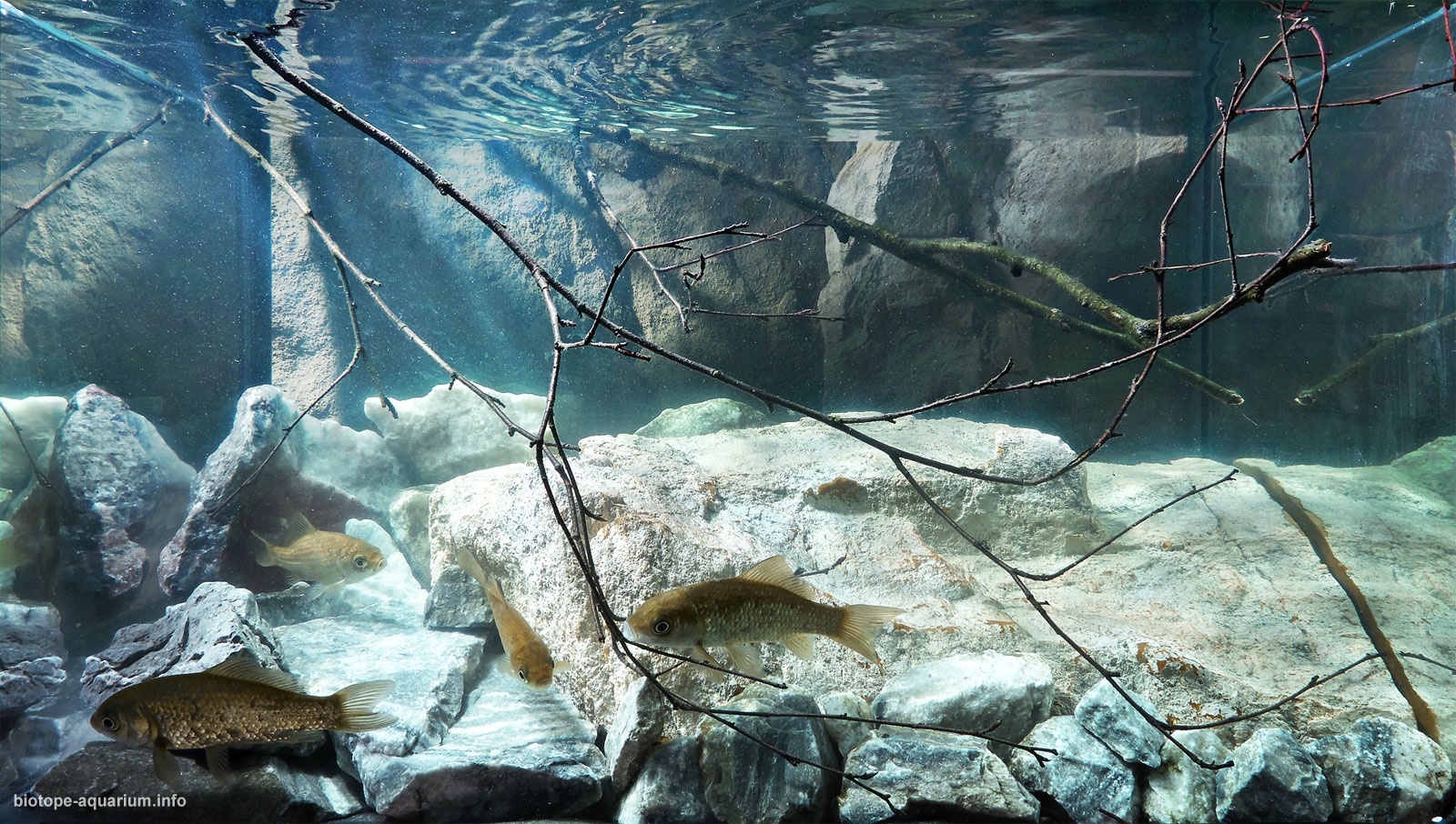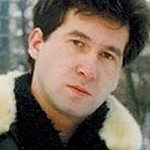Marble quarry, Ruskeala mountain park, Republic of Karelia, Russia
64th place in Biotope Aquarium Design Contest 2017
![]() Russia. Anna Romanchik
Russia. Anna Romanchik

Volume: 80 L
Dimensions: 70x30x37 cm
List of fishes: Carassius gibelio
List of plants: N/A
Description of decorations: Marble from the quarry, birch branches.
Description of equipment: N/A
Water parameters: Temperature is 22°C, pH 7.5, KH 8, GH 12
Description of the area surrounding the biotope: The quarry is located near the village of Ruskeala, 30 kilometers north of the city of Sortavala, on the banks of the Tohmajoka River. Approximately in the middle of the 17th century, the Swedes, who captured the Karelian district in 1632, began to extract marble in these places. After the end of the Northern War, the old Swedish quarries became Russian territory. August 9, 1766 in Ruskeala experimental mining of marble started, which showed good prospects for the field. Marble in Ruskeala from 1769 to the 1840s was extracted by drilling and blasting. Along the bottom of the ledge of the quarry there were wide and deep moats. They were filled with gunpowder and undermined to finally tear the rock from the rock. The block cleared from the rock and sank to the bottom of the pit. Ruskeala’s marble was used in the construction of significant buildings of St. Petersburg and the palace suburbs. In 1939-1947 the quarry did not function. The production of the marble-limestone plant was resumed in 1947 and remained until the early 1990s.
Description of the underwater landscape of the biotope: The marble quarry is an artificial reservoir, a kind of pool of stone. The bottom is littered with fragments of white marble, there is no vegetation in the pond. The walls of the quarry are steep rocks, trees (mainly pine and birch) grow around, so in the water, in addition to marble, there are often branches and pieces of bark. The length of the quarry from north to south is 460 meters, width – up to 100 meters. The distance from the highest point of the pit to its bottom is over 50 meters.
Description of the parameters of the habitat: Transparency of water reaches 15-18 meters. Due to dissolved salts, the water in the quarry has a turquoise hue. Parameters of water in the quarry are PH up to 8.0, KH 12-16, GH up to 20 degrees.
List of fishes: Only roach (Rutilus) and silver crucian carp (Carassius gibelio) are found here. They were brought in an interesting way: birds brought on the claws fragments of aquatic plants, where at times there was fish eggs. Here there are ducks, blue and black gulls.
List of plants: Chlorophyta.
Sources of information: http://www.tech-diving.ru/index.php?News_Marble_2012; http://fb.ru/article/147001/mramornyie-kareryi-mramornyiy-karer-kareliya; http://fb.ru/article/148608/mramornyiy-kanon-ruskeala-foto-ofitsialnyiy-sayt-otzyivyi
Comments of the members of the jury of Biotope Aquarium Design Contest 2017

Setup is new, fish are stressed and they are in too small aquarium. The biotope is interesting, but there should be more effort put to present it in right way.

I would like to give a small recommendation. In terms of copying, the biotope turned out to be almost perfect. Everything is like this in nature. There is one “but” in it. Ruskeala quarry is an artificial pond and crucian carp, most likely, was put in it for purpose. For the crucian carp such a biotope is not natural. It still needs a soft ground where it likes to dig in. In such water bodies with a stony bottom crucian carp survives only because of its natural adaptability. For a given biotope roach would be better. Moreover, there are many of them in the quarry.
